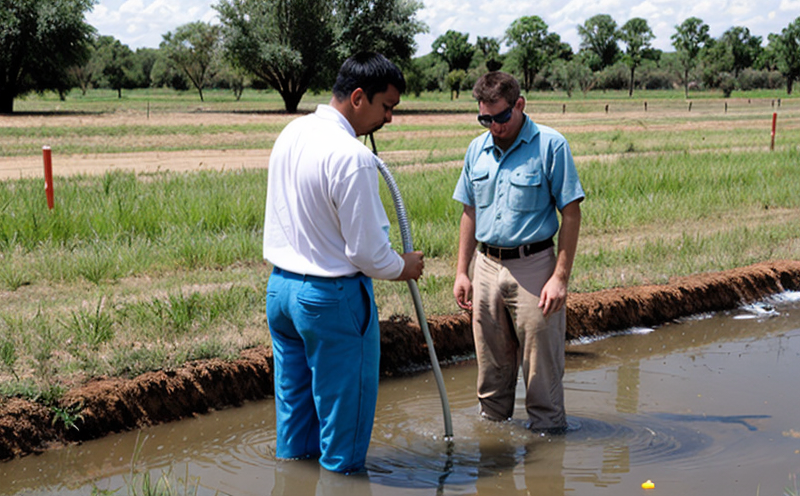ISO 5667-11 Groundwater Sampling Test
The ISO 5667-11 standard is a globally recognized guideline that provides comprehensive procedures for groundwater sampling, with the aim of ensuring accurate and reliable water quality analysis. This test ensures that samples are collected under controlled conditions to minimize contamination and bias, thereby supporting accurate interpretation of results.
Groundwater plays an essential role in various sectors such as agriculture, drinking water supply, and industrial processes. As a result, it is crucial to monitor the quality of groundwater over time through regular sampling and analysis. The ISO 5667-11 standard outlines several methods for collecting representative samples from both shallow and deep wells, ensuring that all parameters relevant to water quality are accounted for.
The process begins with careful identification of appropriate well locations based on hydrogeological maps and site-specific conditions. Once the location is identified, a series of steps must be followed to ensure proper sample collection:
- Thorough cleaning of the sampling equipment
- Preliminary flushing of the borehole or aquifer
- Verification that the water level in the well is stable
- Selecting an appropriate sampling technique (e.g., bailer, pump)
After collection, samples are typically preserved using specific additives to prevent changes in chemical composition. Proper handling and transport of these samples back to the laboratory ensures their integrity throughout analysis.
The ISO 5667-11 protocol covers numerous contaminants that could be present in groundwater, including metals like lead and arsenic, organic compounds such as benzene, and microbiological indicators. By following this standard, laboratories can provide clients with accurate data on the presence and concentration of these substances.
Another important aspect of ISO 5667-11 is its emphasis on traceability and documentation. Every step in the sampling process—from initial site selection to final sample submission—is documented meticulously. This ensures that any potential discrepancies or issues can be traced back to their source, enhancing overall confidence in the test results.
Adhering to ISO 5667-11 not only benefits individual laboratories but also contributes significantly towards achieving sustainable development goals by providing reliable data for informed decision-making regarding resource management and environmental protection.
Eurolab Advantages
At Eurolab, we pride ourselves on offering a wide range of services aimed at helping our clients achieve their objectives in various sectors. Our ISO 5667-11 groundwater sampling tests stand out due to several key advantages:
- Expertise and Experience: With years of experience in environmental testing, Eurolab's team has developed a deep understanding of best practices for sample collection.
- Precision Instruments: We utilize advanced equipment designed specifically for groundwater sampling to ensure accuracy and precision in every measurement.
- Comprehensive Reporting: Our reports are detailed and user-friendly, providing clear insights into the findings from our analyses.
- Client-Centric Approach
Why Choose This Test
The ISO 5667-11 groundwater sampling test is essential for several reasons:
- To ensure compliance with international standards and regulations related to water quality.
- To provide accurate data necessary for making informed decisions about resource management.
- To protect public health by identifying potential risks associated with contaminants in drinking water sources.
- To support environmental protection efforts through continuous monitoring of groundwater resources.
By choosing Eurolab's ISO 5667-11 groundwater sampling test, you gain access to expert knowledge and state-of-the-art facilities. Our services are tailored to meet the unique needs of each client, ensuring that they receive reliable results every time.





